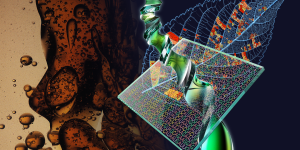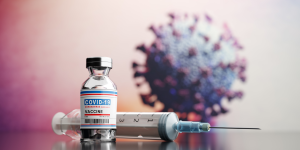mHealth has emerged in recent years as largely an application for developing countries, stemming from the rapid rise of mobile phone penetration in low-income nations. The field, then, largely emerges as a means of providing greater access to larger segments of a population in India, as well as improving the capacity of health systems in such countries to provide quality healthcare. Here are some good examples of mHealth applications in India:
Mobile application for anganwadis (MAA)
MAA is a Low-cost scalable, replicable, no Capital Expenditure (CAPEX) mobile application. It empowers the Anganwadi workers in indenting foods, reporting daily the Supplementary Nutrition beneficiary attendance, Pre-school education attendance of children, Immunization details of beneficiaries, and women to monitor IMR and MMR, Supervisors field inspection reports such as AWC is opened or not, Workers are present or not, beneficiaries are present or not etc..
Every month at present several lakhs of sms messages are being transmitted through the system. The system eliminated food gaps and ensured availability of food at AWCs, improved the attendance and performance of AWCs, and which resulted in improvement of IMR and MMR status and reduction of severely malnourished children in A.P.
The food supply chain management alerts also being sent to the different stakeholders. It produced Mobile Apps for Management of Entire Anganwadi Centre functions. MAA is sustainable as the overheads are least. Just an ordinary mobile phone is required at AWC.
The target clientele are poor malnourished women and children. Resources conserved and saved is equivalent to resources generated. The reduction in IMR and MMR for India is more valuable. System is sustainable, at minimum fixed monthly rental of mobile phone which is around Rs.30/ per month.
The SIMs shall be provided at free of cost by Telecom Operators. The Anganwadi workers have to use their own mobile phones. The Performance of each Anganwadi worker in the country can be tracked on day to day basis. The problems faced by each AW can also get communicated easily, so timely redressal is possible. The stakeholders shall be accountable.
Swasthya Slate
The Swasthya Slate is a small (3.5 inch) box which connects via Bluetooth to a 16 GB Android tablet already equipped with the Swasthya application. All captured data is then synced with an online server which can be accessed by a qualified doctor. With an Open-source operating system handling data, the avenues the devices can scale up to are endless.
Swasthya Slate (translates to Health Tablet) that allows frontline health workers to delivery 9 diagnostic tests at 5% of the prevailing costs. These are 1) Blood Pressure 2) Blood Sugar 3) Blood Hemoglobin 4) Urine Protein 5) Urine Sugar 6) ECG 7) Heart Rate 8) Water Quality 9) Body Temperature. It used affordable diagnostic equipment and digitized their readings. These digitized values are sent to an Android tablet wirelessly via a Bluetooth connection. In the tablet, a free to use application called Swasthya Slate allows the healthcare worker to take demographic details as well as clinical information of the patient.
The system has reduced administrative paperwork time from 54% to 8%. One of the softwares, known as decision support system allows the FHW to input certain parameters and readings from the Swasthya Slate diagnostic equipment to generate recommendations for treatment of the patients or refer them to doctors. Referral process is completely automated where on need the letter of referral is automatically generated and forwarded to doctors.
The service launched in 12 centers in Andhra Pradesh. In Punjab, it provided tablets to an NGO called eHealthPoint. The system has been employed to screen 450 mothers in Mukhtsar, Punjab and app has enabled a 400% increase in number of antenatal care visits.
DIABETES – AWARENESS AND PREVENTION THROUGH MOBILE INNOVATION, NOKIA INDIA PVT. LTD.
Arogya World?s mDiabetes is a diabetes prevention mobile health (mHealth) initiative, being implemented in association with Nokia, which is reaching one million consumers in rural and urban India. It is educating consumers about diabetes and its prevention through text messages, twice a week, in 12 languages. All 1 million consumers have been enrolled in the program and 33 million text messages sent so far.
As part of mDiabetes, alerts have been sent in 12 regional languages, informing Nokia mobile phone users in India about diabetes and its prevention with lifestyle changes. Content is available in languages: English, Hindi, Marathi, Telugu, Tamil, Gujarati, Bengali, Kannada, Punjabi, Malayalam, Oriya and Assamese.
mDiabetes runs on the Nokia Life platform, which delivers life-enhancing information and advice co-developed with more than 90 knowledge partners, and works on a wide range of Nokia mobile phones. To-date, Nokia Life services covering topics such as health, education and agriculture have been experienced by more than 95 million people across India, China, Indonesia and Nigeria. The mDiabetes program in India started in January 2012. People enrolled for this service span residents of rural and urban India.
All users subscribed to the Diabetes service receive alerts on diabetes and its prevention twice-a week. The user subscribes for FREE to the service by browsing the Health menu on Nokia Life and navigating to Diabetes OR via a service offer notification that they have received. The Diabetes awareness and prevention content have been developed by our partner Arogya World with strong emphasis on science and behavior change. These have been reviewed for cultural relevancy, technical accuracy by their medical and behavior change experts, translated and transmitted by Nokia to mobile phone consumers.
.
MOBILE BASED SURVEILLANCE QUEST USING IT (MOSQUIT), CENTRE FOR DEVELOPMENT OF ADVANCED COMPUTING (CDAC)
MoSQuIT (Mobile based Surveillance Quest using Information Technology) software is a Disease Surveillance System for Malaria using Mobile platform. MoSQuIT is a Disease surveillance system for Malaria using mobile platform. MoSQuIT software is developed by Centre for development of Advanced Computing (C-DAC), Pune, in collaboration with Regional Medical Research Centre (RMRC, ICMR), Dibrugarh, Assam.
The Malaria Disease Surveillance using Mobile platform (MoSQuIT) is a platform that enables Malaria incidence related data-collection using the ubiquitous mobile phone, updation of centralized IT based surveillance system, thereby reducing the time duration needed in information proliferation, and initiation of appropriate timely action by State Health system. The complete Workflow of malaria surveillance using the MoSQuIT software is as follows:
A) Data collection on Mobile phone: This provides user interface on the Mobile phone for collection of Demographic data, Fever related information (Duration of fever, RDT result), Laboratory slide collection status and result, Treatment given to patient.
B) Data transfer from Mobile phone to Server machine: This helps in transferring the data collected from mobile phone to centralized system, using three modes (General Packet Radio Service (GPRS), Short Message Service (SMS), or Manual mode). Depending on availability of cellular network in the rural area where data collection is being done, the mode of data transfer can be selected. If network is strong and continuously available then GPRS can be selected, while if the network is intermittently available then SMS mode can be selected, and if network is not available data can be transferred using manual mode.
C) Data collation and analysis on Server machine: The data transferred through the mobile phones on the field is instantly available at a centralized location.
The outreach is through Accredited Social Health Activist (ASHA) workers who visit the villages for active Malaria surveillance activities. The ASHA workers report to the Medical Officer in the PHC, who in turn works close with RMRC for the MoSQuIT project.
editor@ictpost.com








